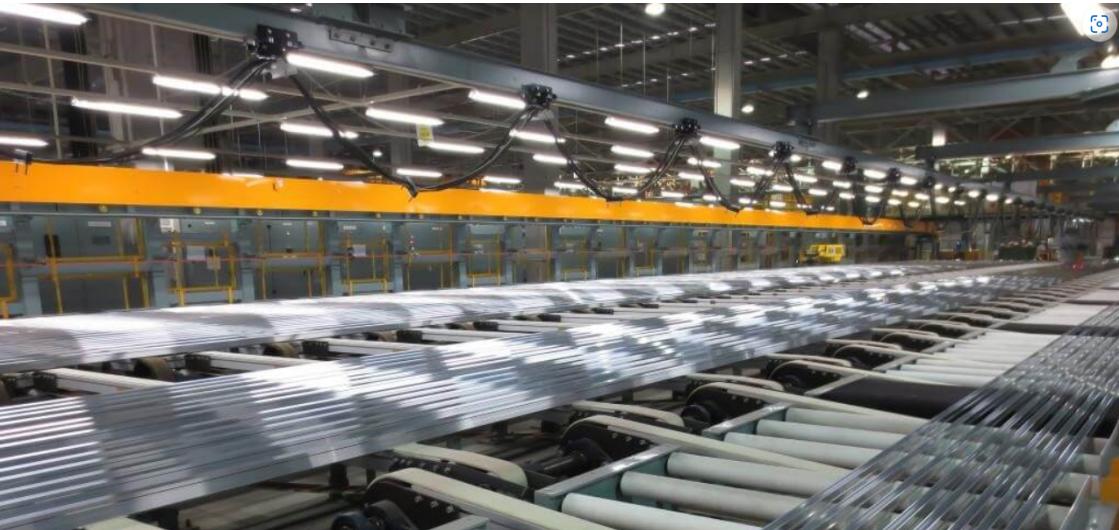What is Aluminum extrusion?
Aluminum extrusion is a technique used to transform aluminum alloy into objects with a definitive cross-sectional profile for a wide range of uses. It is the most popular processing mode for aluminium.
Two different extrusion techniques
There are two different extrusion techniques: direct extrusion and indirect extrusion.
What kind Shapes can be extruded?
● Hollow Shapes: shapes such as tubes or profiles with varying cross-sections
● Semi-Solid Shapes: such shapes include channels, angles, and other partly opened shapes.
● Solid Shapes: This includes solid bars and rods with different cross-sections.
● Custom Aluminum Extrusion Shapes: These types of shapes usually have multiple extrusions. Also, they could be interlocking shapes with several color profiles. These shapes are precise to the designer’s specifications.
The 6 Steps of Aluminum Extrusion
● The extrusion process is conducted in extrusion presses with different power levels. The basic process can be divide into six distinct steps.
● And before the extrusion process begins, the cast aluminum billets needs to be cut into shorter pieces. That ensure the length of each extruded bar will be nearly the same and avoid material wastage.
Step 1: Heating the aluminum billet and steel die
● The billets are heated from room temperature to the extrusion The temperature varies depending on the alloy and the final temper.
● To prevent heat loss, the billets are quickly transported from the furnace into the press.
Step 2: Loading the billet into the extrusion press container
● Cast billets are loaded into the container and are ready to be extruded.
● The ram starts applying pressure into the heated billet and pushes it towards the die opening.
Step 3: Extrusion
● The heated aluminum billet is pushed through the openings in the tool. Those openings can be modified to create Aluminum profiles with different shapes and sizes.
● When the bars exit the press, they are already extruded into their required shape.
Step 4: Cooling
● The extrusion process is followed by quick cooling of the extruded bars/tubes/profile
● To prevent any deformation, the cooling process must be carried out immediately after the extrusion process.
Step 5: Stretching and Cutting
● Immediately after quenching, the extruded bars are cut into the prescribed interphase length.The cut bars are then grabbed by a puller, which lays them over the runout table.
● At this stage , the extruded bars come to the strengthening process, it ensures their mechanical properties by removing the internal tension within the bars.
● Bars are cut to the length requested by the customer.
Step 6: Surface treatment and final packaging
● Surface treatments are performed on aluminum profiles, such as anodizing, spraying, etc., to enhance their performance and appearance.
● The extruded bars/tubes/profile be packed and ready for shipment.
Advantage of Aluminum extrusion:
One of the most notable advancements in aluminum extrusion technology is the ability to produce cut-to-length profiles. This process involves extruding aluminum profiles in specific lengths, eliminating the need for further cutting or machining. The advantages of cut-to-length profiles are numerous:
● Reduced Waste: With cut-to-length profiles, manufacturers can minimize material waste by producing profiles tailored to the required lengths, thereby optimizing material utilization and reducing costs.
● Enhanced Precision: By manufacturing profiles in precise lengths, cut-to-length extrusion ensures consistent and accurate dimensions, promoting seamless assembly and reducing potential errors.
● Streamlined Production: Cut-to-length profiles significantly simplify the manufacturing process as they eliminate the need for additional cutting or machining operations, saving time and improving overall efficiency.
Post time: Dec-18-2023



